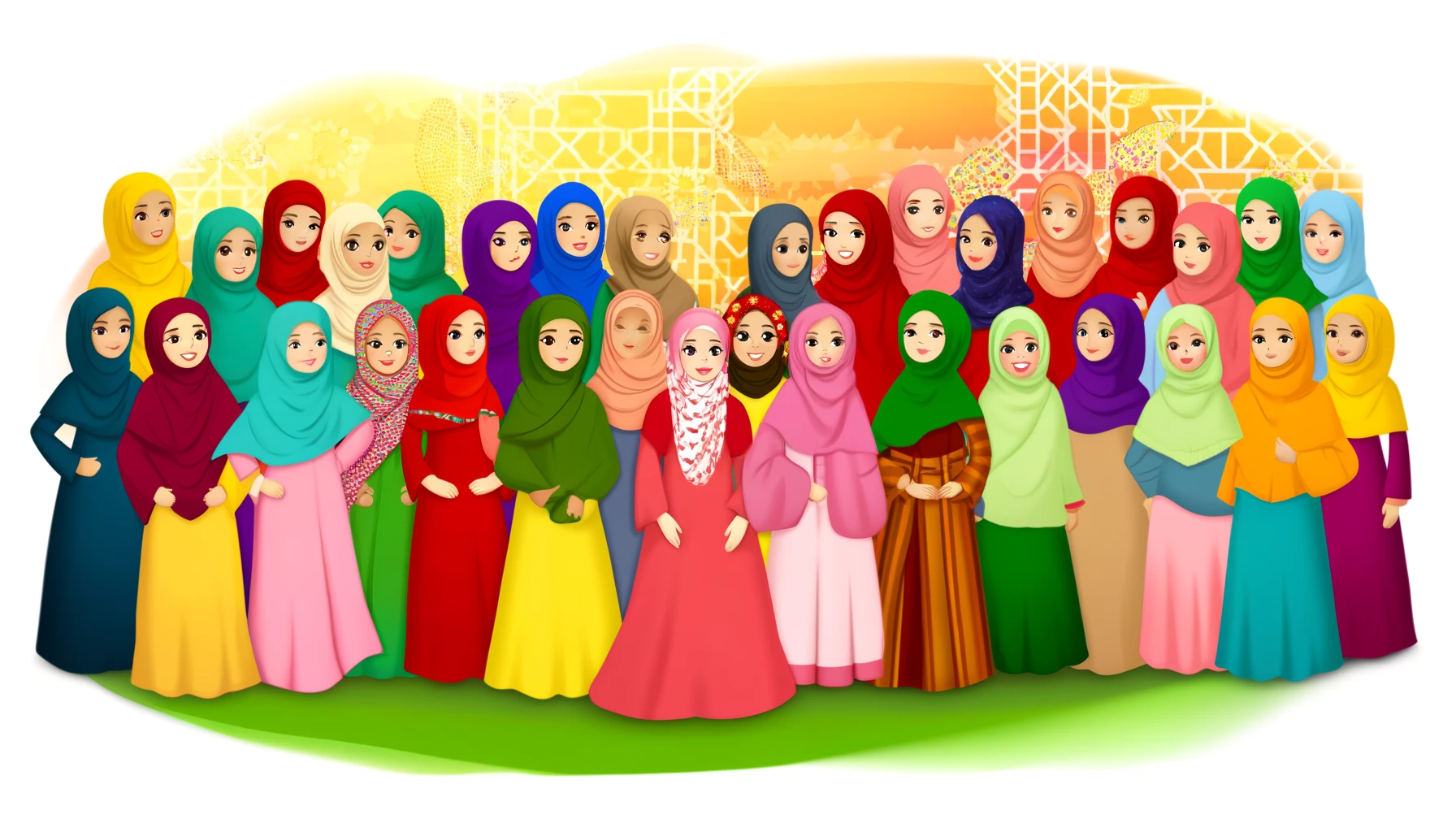Sometimes we can forget the numbers and fatten up…. not the waistline, I mean the seven letters of isti‘laa’… and the only way to do that is by using some tafkheem thickshakes… they’re deliciously guilt free!
In continuation from the previous posts about the characteristics of the letters, tafkheem is a sifah ‘aaridah (redundant characteristic).
Tafkheem ( تفخيم ) means ‘fatness’ or ‘thickness’ added on to a letter as a redundant characteristic (noting that it still must be exercised). Within tafkheem are categories and levels. This post hones in on the first category, letters that are always said mufakham (with tafkheem). These letters are the seven letters of isti’laa’ (elevation).
خُصَّ ضَغْطٍ قِظْ
These seven letters are always mufakham and are present across four “levels of tafkheem”, referred to as “maraatib al-tafkheem“.
1. The strongest level of tafkheem occurs when one of the 7 letters has a fat-ha on it, and is followed by an alif
لِلطَّائِفِينَ
Lil-taa’ifeena
2. The second level of tafkheem occurs when one of the 7 letters has a fat-ha on it, but is not followed by an alif
طَهِّرْ
Tahhir
يَفْقَهُونَ
Yafqahoon
3. The third level of tafkheem occurs when one of the 7 letters has a dammah on it
انْظُرْ
Unthur
ادْخُلُوا
Udkhuloo
4. The weakest level of tafkheem occurs when one of the 7 letters has a kasrah under it
صِنْوَانٍ
Sinwaanun
قِبَلَ
Qibala
![]()
When one of the 7 letters of tafkheem has sukoon on it, the diacritic on the letter preceding it is looked at to determine the sub-level.
2. a) if the saakin letter has a fat-ha before it, it becomes the “third level of tafkheem“, written here as 2. a) as it slots between the second and third level noted above.
وَالْمَغْرِبِ
Wal-maghrib
3. a) if the saakin letter follows a dammah, it becomes the “fourth level of tafkheem“, written here as 3. a) as it slots between the third and fourth level noted above.
مُظْلِمُونَ
Muthlimoon
4. a) if the saakin letter has a kasrah before it, it becomes the “fifth level of tafkheem“, written here as 4. a) as it slots in with the fourth level noted above.
أَنِ اضْرِبْ
Ani-drib
So the levels of tafkheem can be summarised in a few ways. The first structure is as shown above. The other two are below.
![]()
There are 4 levels of tafkheem, with three sub-levels. These are:
1. Isti‘laa’ letter has fat-ha on it and an alif maddeeyah after it
2. Isti‘laa’ letter has a fat-ha on it
2. a) Isti‘laa’ letter is saakin and has a fat-ha before it
3. Isti‘laa’ letter has a dammah on it
3. a) Isti‘laa’ letter is saakin and has a dammah before it
4. Isti‘laa’ letter has a kasrah under it
4. a) Isti‘laa’ letter is saakin and has a kasrah before it
This structure is just a re-organised version of the one shown above.
![]()
The other structure states there are 5 levels of tafkheem. These are:
1. Isti‘laa’ letter has fat-ha on it and an alif maddeeyah after it
2. Isti‘laa’ letter has a fat-ha on it
3. Isti‘laa’ letter has a dammah on it
4. Isti‘laa’ letter has a sukoon on it
a) Isti‘laa’ letter is saakin and has a fat-ha before it
b) Isti‘laa’ letter is saakin and has a dammah before it
c) Isti‘laa’ letter is saakin and has a kasrah before it
5. Isti‘laa’ letter has a kasrah under it
![]()
I personally find the first (and second) structure to make more sense as a saakin tafkheem letter with fat-ha before it would naturally be “stronger in tafkheem” than a tafkeem letter with dammah on it. Simply, the notion of understanding that the sub-levels are a part of their own respective level is also clearer.
![]()
There is another school of thought which states there are only three levels of tafkheem, where the strongest has a fat-ha, middle has a dammah, and weakest has a kasrah. It combines the sub-levels of the saakin letter under their own respective level.
![]()
This concludes the first category of tafkheem. The next category may be looked at over a couple of posts. It’s nothing to fret about, though ?
![]()
Resources Link:
Sifaatul Aaridah: Letters of Tafkheem





0 Comments
Oops comments are disabled